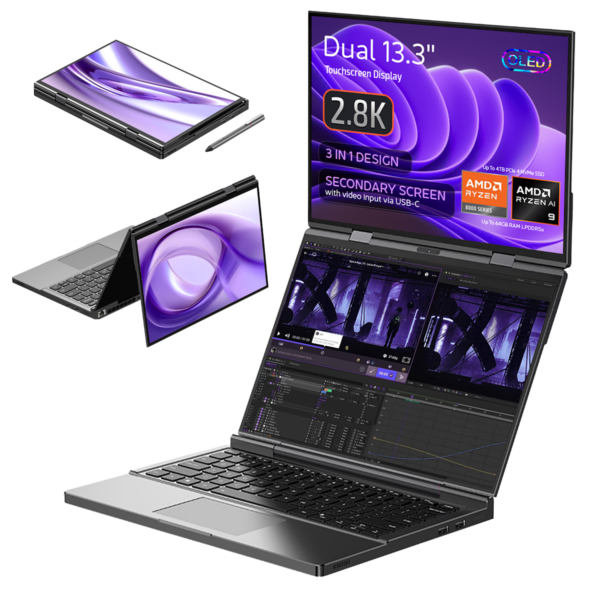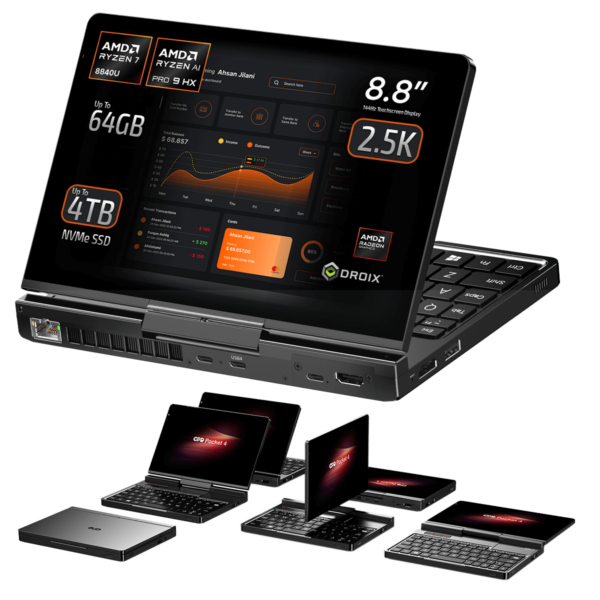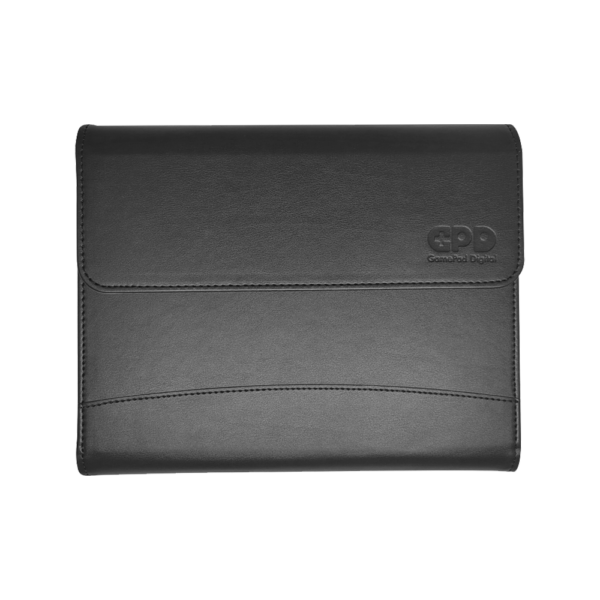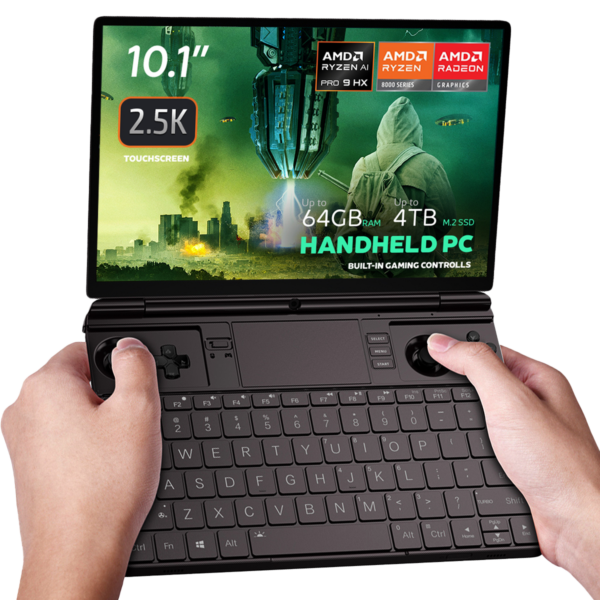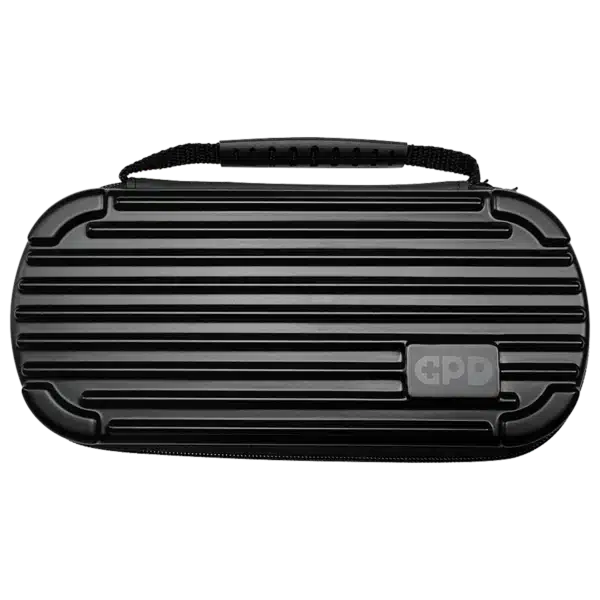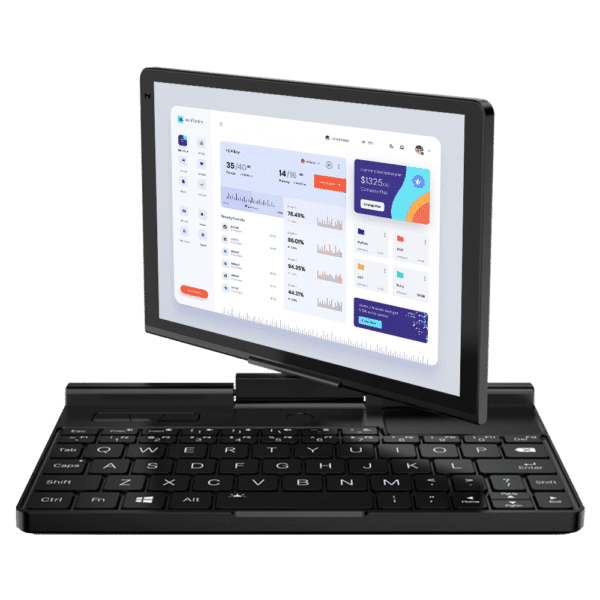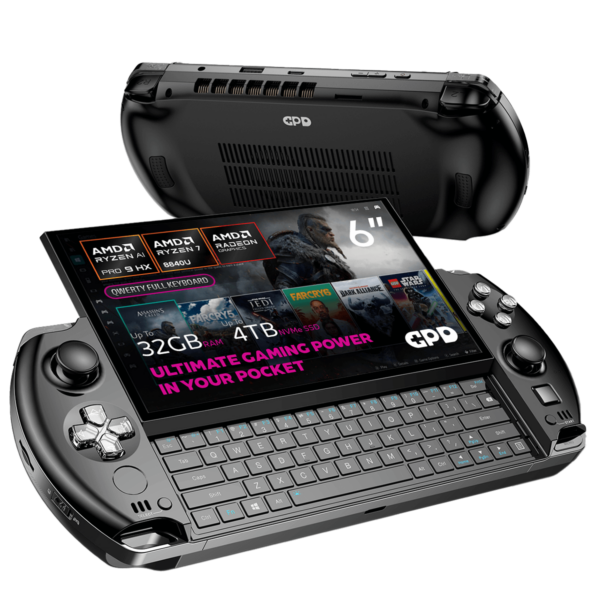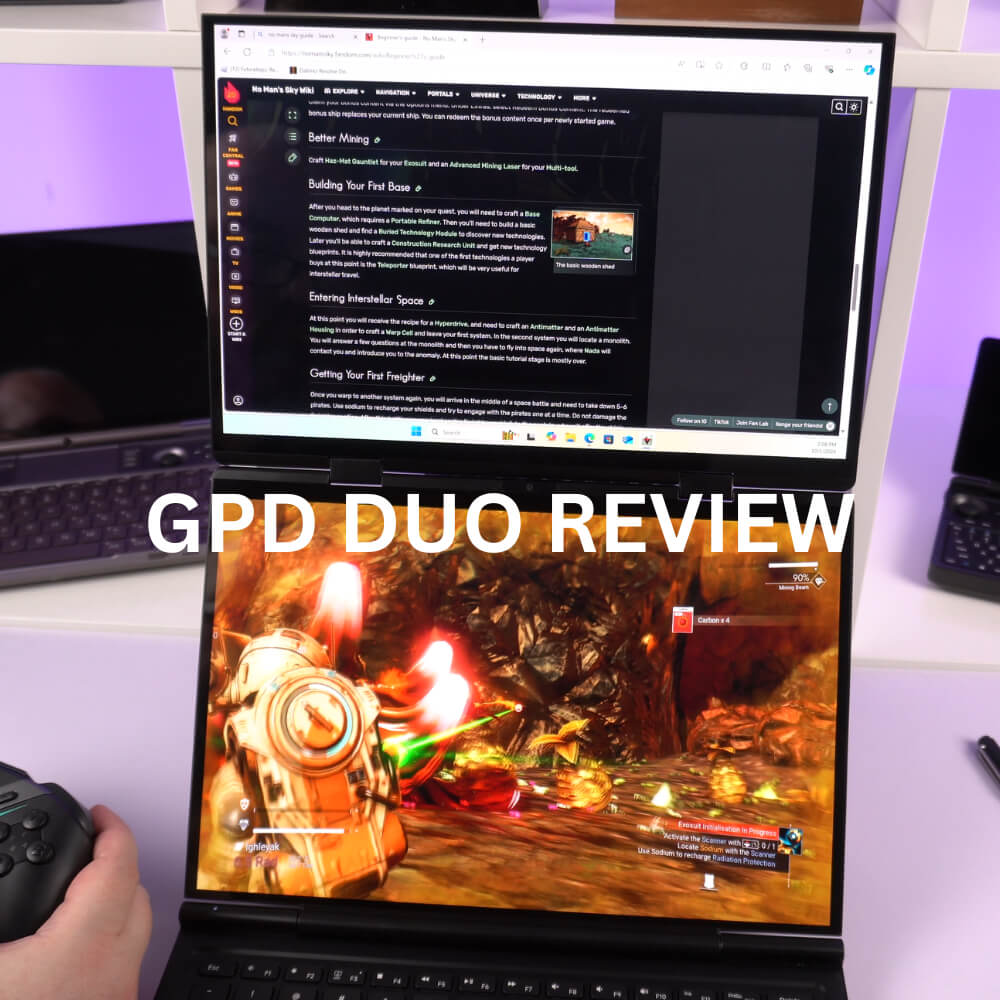
GPD Duo Review – Awesome Dual AMOLED Displays and High Performance AMD Ryzen 9 AI 370 HX for Creatives and Gamers
GPD Duo Review
-
Design
-
Build Quality
-
Display
-
Performance
-
Features
-
Software
Summary
Pros
- Stunning dual 13.3-inch AMOLED displays
- Wide array of ports including OCuLink and USB 4
- Processor options: AMD Ryzen 7 8840U or Ryzen 9 AI HX 370
- Efficient cooling system
Cons
- Weighs 2.2kg, making it heavier than other GPD devices
User Review
( votes)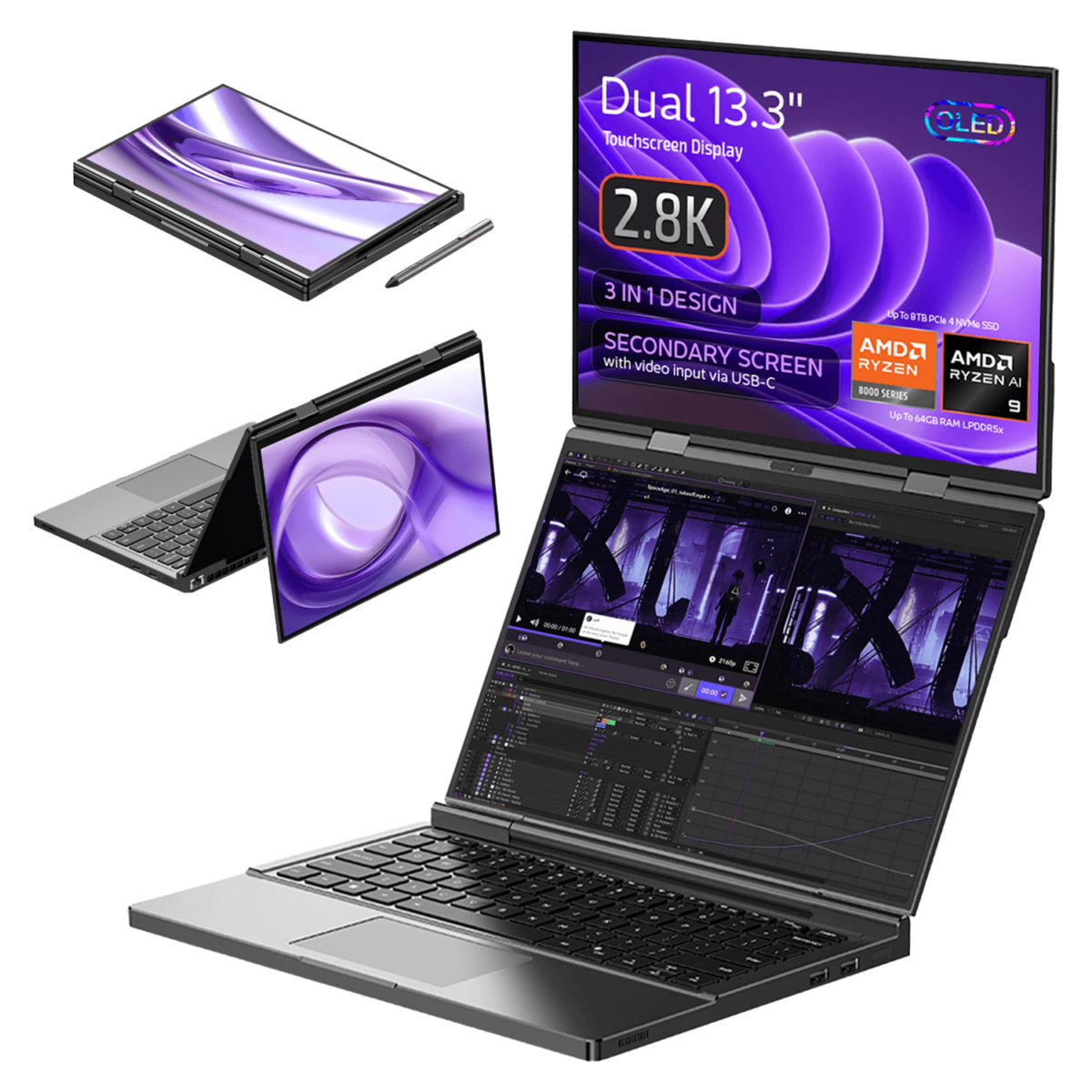
GPD DUO Mini Laptop
The GPD Duo is coming soon and we were able to try a pre-production model ahead of its release. In our GPD Duo review we cover the dual screen laptops operation, identify some issues that will be fixed by the final model, and run some benchmarks to find out the awesome AMD Ryzen 9 AI 370 HX processors performance.
GPD Duo Review Video
GPD Duo Overview
Let’s kick off this GPD Duo review by diving into the dual displays and the different modes it offers.

The GPD Duo dual screen laptop measures about 11.6 x 8.2 x 0.9 inches (29.7 × 20.9 × 2.3 cm) when completely closed, and it weighs approximately 2.27 kilograms (5 lbs). It’s relatively heavy, especially compared to models like the GPD Win MAX 2, which weighs less than half as much.
Opening the Duo reveals the two displays. Both the upper and lower screens can be adjusted independently to suit your preferences, and there’s a kickstand at the back for additional support.
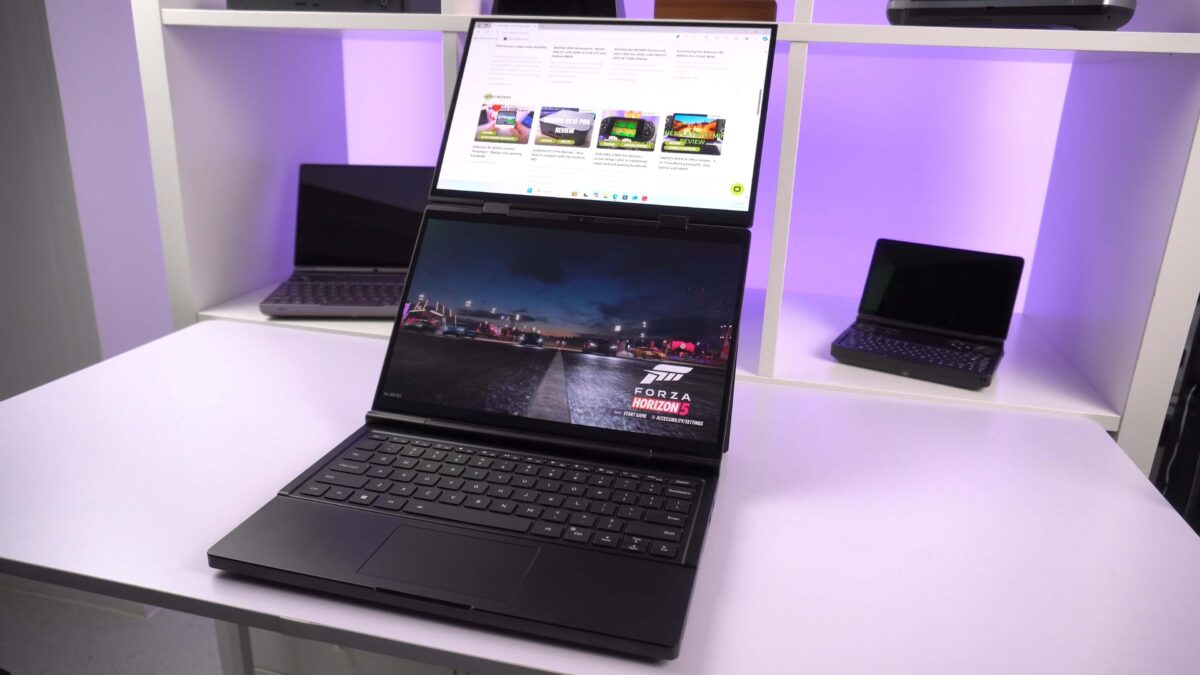
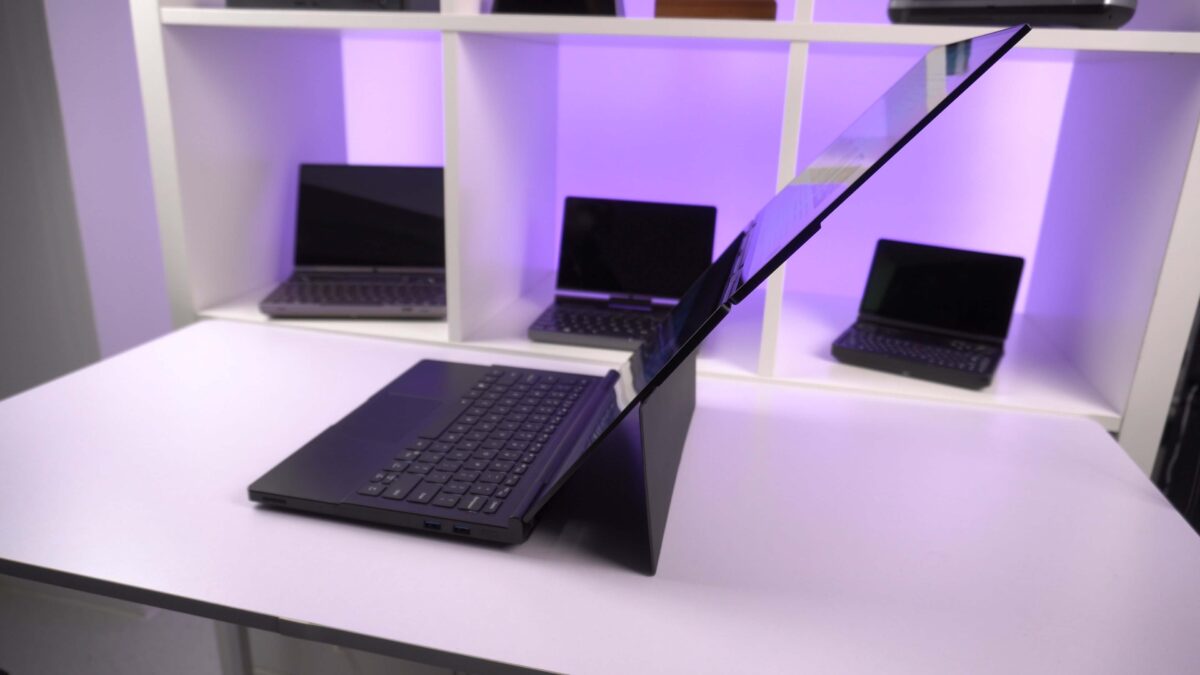
When fully unfolded to the standard angle, the dual screen laptop stands about 13.7 inches (35 cm) in height.

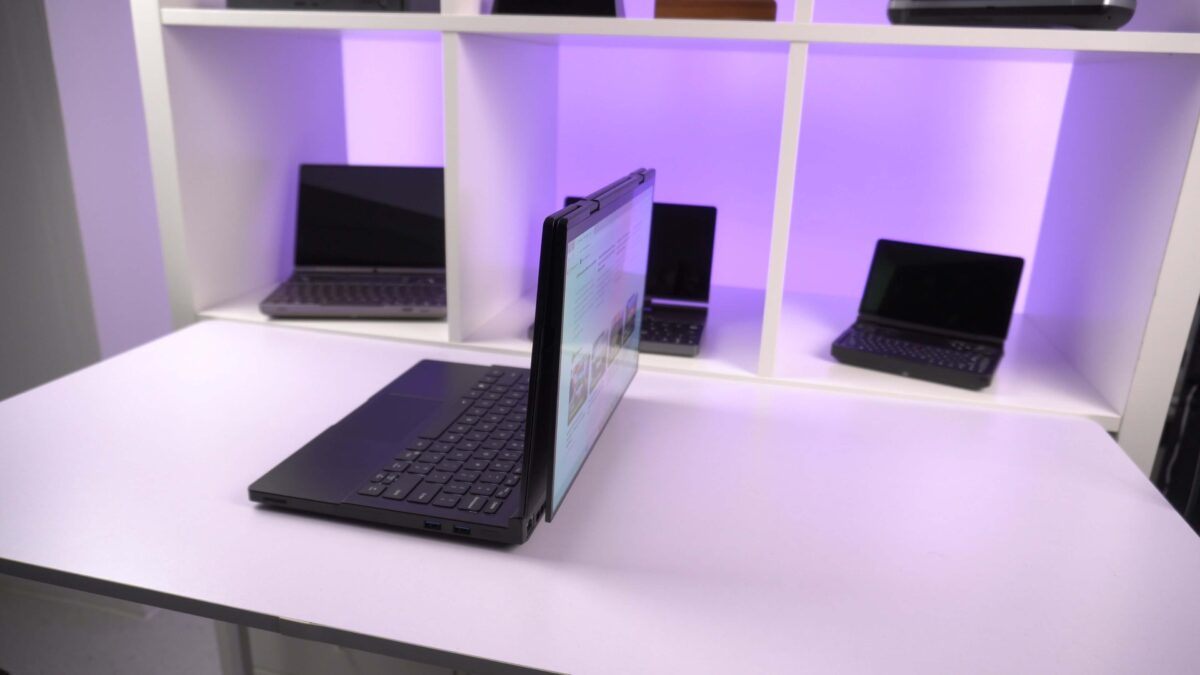
The upper screen can also fold backward into a presentation mode, displaying on both sides. In this position, the device stands about 8.8 inches (22.5 cm) tall. Lastly, the GPD Duo can also be used in tablet mode by folding the device completely, using the top screen as a tablet display. In this mode, it is about 0.98 inches (2.5 cm) thick.
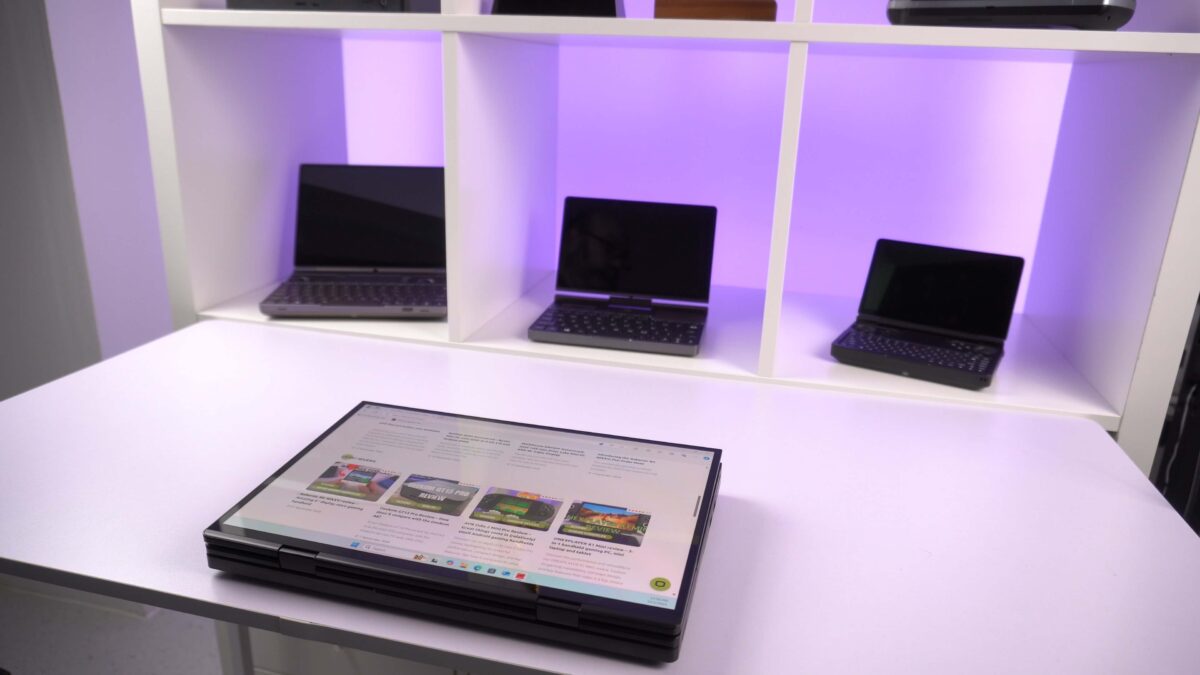
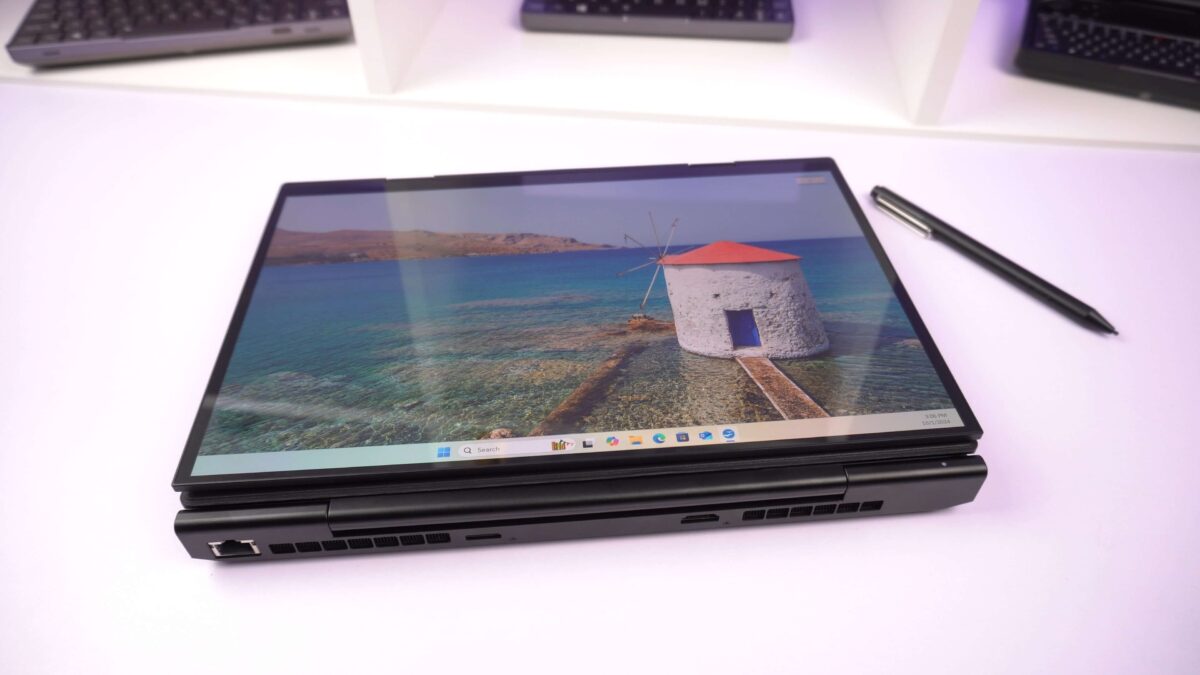
It’s worth mentioning that in presentation and tablet modes, the top screen can feel a little loose. GPD has confirmed they’ll add a magnet in the final production model to address this.
We continue the GPD Duo review with a look at the rest of the laptop. The screens themselves are 13.3-inch AMOLED touch displays with a 2880×1800 resolution at 60Hz. The visual quality is outstanding, particularly when HDR is enabled, offering a clear and vibrant display perfect for various tasks such as work, media consumption, and gaming.
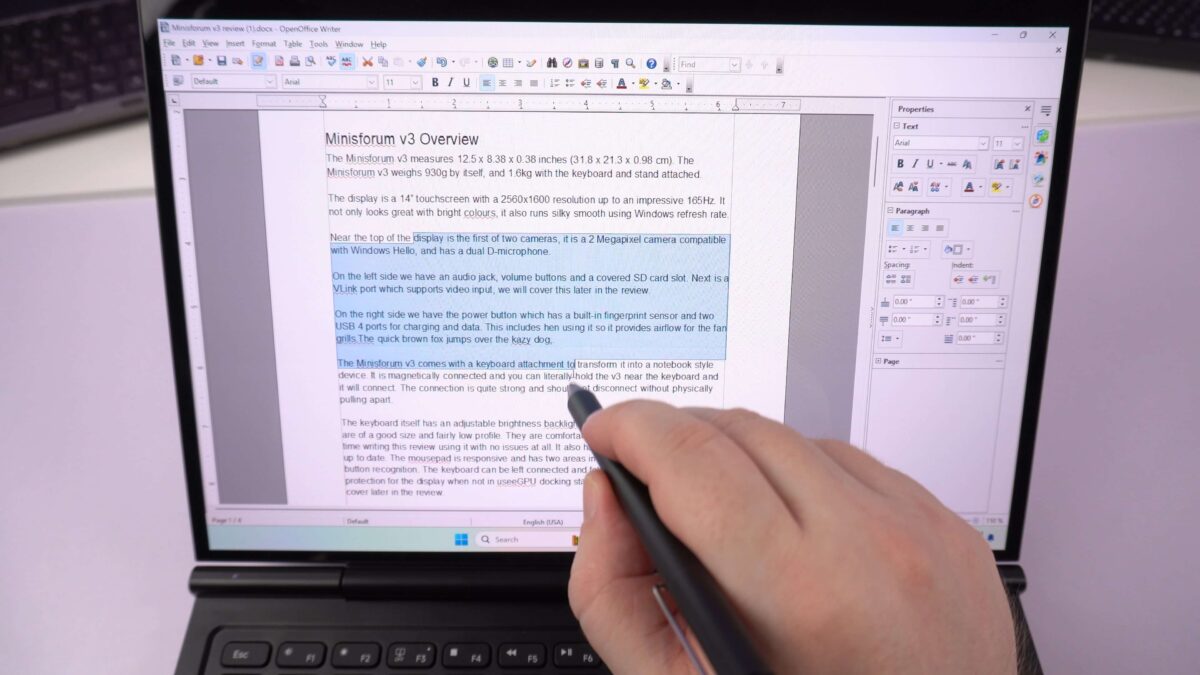
For those focused on productivity, both displays support the GPD stylus and Surface Pen with 4096 levels of pressure sensitivity. I’m no artist, but for designers, this feature will likely be a significant benefit.
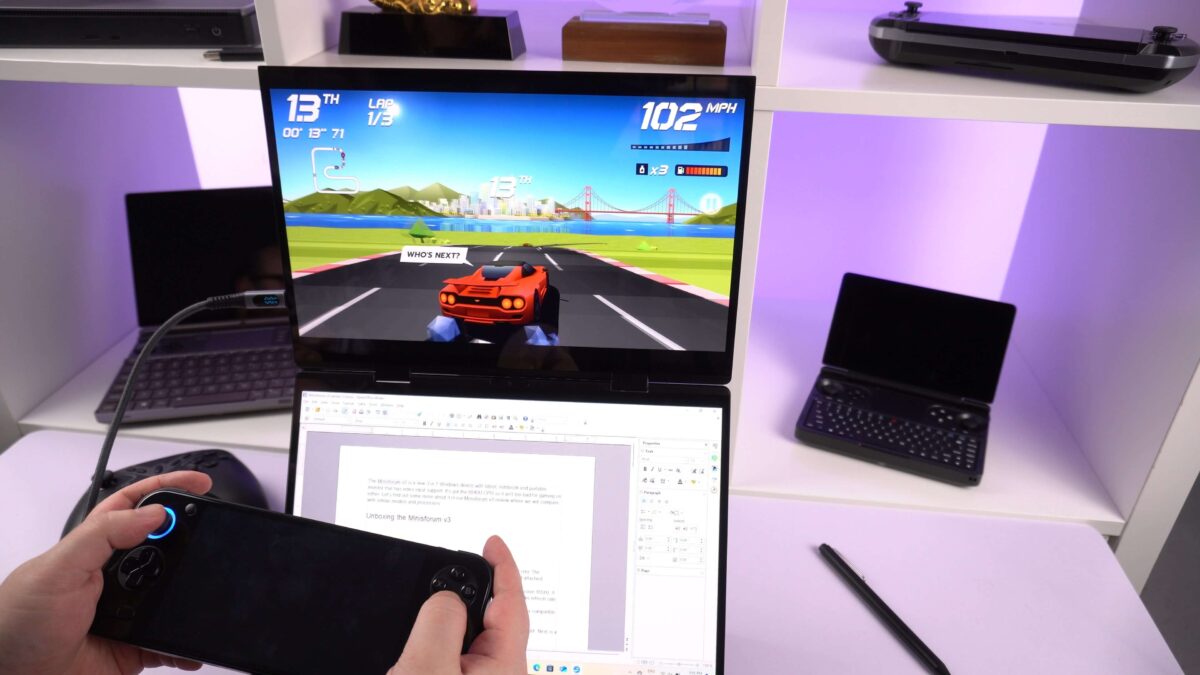
The upper display also supports video input via USB-C, allowing you to connect other devices like gaming consoles, laptops, or smartphones. The GPD Duo can run Windows on the bottom display simultaneously, and the upper screen can still function even if the laptop is powered down.
Design and Features
Next in our GPD Duo review we cover the design and features of the device. The GPD Duo dual display laptop includes a full QWERTY keyboard, which is backlit and can be toggled on and off. The keys are spacious and have a low profile, providing a comfortable typing experience. I used it to write this review and found it quite responsive. While I’m generally not a fan of trackpads, I had no issues with this one—it’s smooth and offers solid left and right clicks.

On the left side, there’s a 3.5mm audio jack, a full-size SD card slot, a USB 4 port, and a USB Type-C port. On the right, you’ll find two USB-A 3.2 Gen 1 ports and the power button, which has a built-in fingerprint scanner. At the back, there’s a 2.5Gbps ethernet port, an OCuLink port for connecting to an eGPU like the GPD G1, and an HDMI port for external monitors.
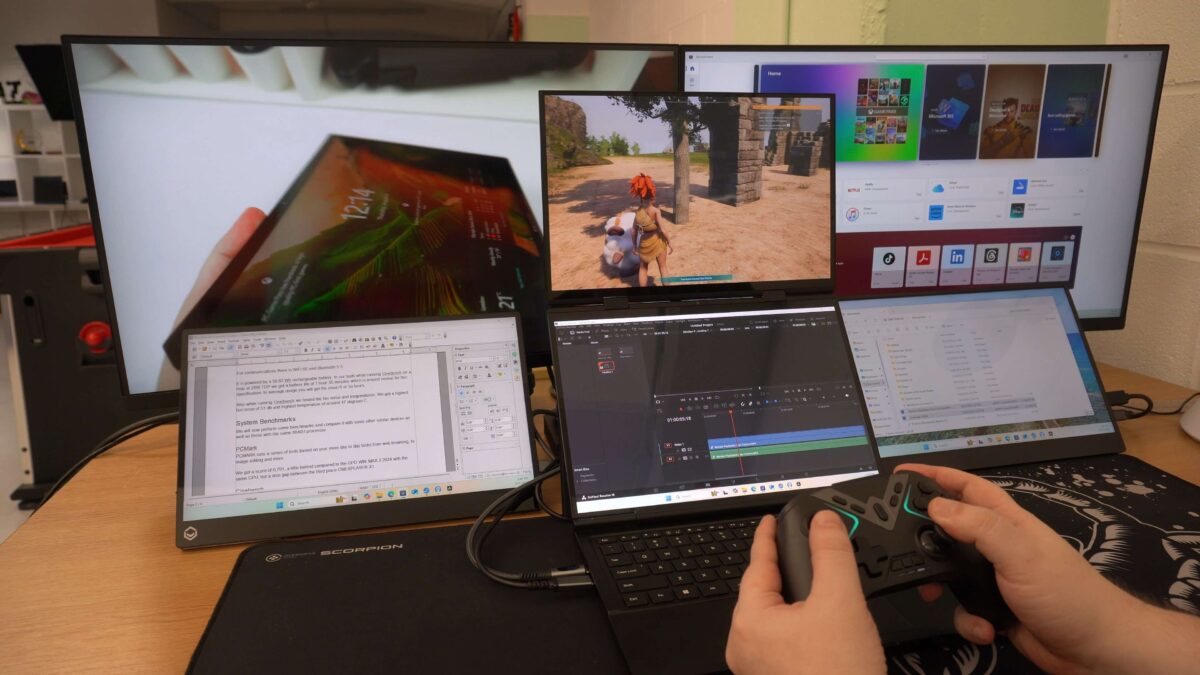
The GPD Duo can support up to two additional displays through its USB and HDMI ports, allowing for a four-screen setup. Adding the GPD G1 eGPU docking station expands that capability to six screens.
GPD Duo Technical Specifications
In this section, we’ll look at the specs for both models of the GPD Duo dual screen laptop, as well as tests we conducted for battery life, fan noise, and temperatures as part of our GPD Duo review.
Processor Options
- AMD Ryzen 7 8840U Model: 8 cores, 16 threads, with a base clock of 3.3 GHz and a maximum boost of 5.1 GHz. AI processing: 16 TOPS, total performance: 38 TOPS, with a TDP of 28W to 35W.
- AMD Ryzen 9 AI HX 370 Model: 12 cores, 24 threads, base clock of 2.0 GHz, and maximum boost of 5.1 GHz. AI processing: 50 TOPS, total performance: 80 TOPS, with a TDP of 35W to 60W.
Specifications
- Displays: Two 13.3″ AMOLED, 2880×1800 resolution, 60Hz, 16:10 aspect ratio, 255 PPI, 133% sRGB coverage, 500 nits brightness.
- RAM: Options for 32GB or 64GB LPDDR5 at 6400/7500 MT/s.
- Storage: Options include 512GB, 1TB, 2TB, 4TB or 8TB PCIe 4.0 × 4 NVMe SSDs with support for up to 8TB.
- Camera: The bottom display includes a 5MP ultra-wide-angle camera.
- Connectivity: Wi-Fi 6E, Bluetooth 5.3, 2.5G Ethernet.
- I/O Ports: USB4 (40Gbps), OCuLink (PCIe 4.0 × 4), HDMI 2.1, USB-C (10Gbps), two USB-A ports, full-size SD card reader, and a 3.5mm audio jack.
- Battery: 80Wh lithium polymer battery supporting fast charging to 50% in 29 minutes.
Performance Tests: Battery, Fan Noise, and Temperature
Next in our GPD Duo review we run our own battery life, fan noise and temperature tests. The GPD Duo laptop with dual screens comes with an 80Wh battery capable of fast charging. In our tests, using the default 28W TDP and full screen brightness on full CPU load running Cinebench, we achieved about 1 hour 45 minutes of battery life with both displays active. Disabling the top screen extended this to 2 hours, a difference of roughly 15 minutes. We’ll conduct additional tests on idle and average usage for the final model review.
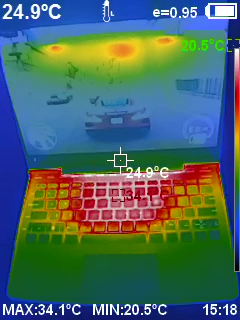
We also measured fan noise during the battery test. Under moderate load, the fans generated about 55dB of noise, increasing to 60dB under heavy workloads. While running Cinebench and Forza Horizon 5, the highest temperature recorded was around 50°C.
System Benchmarks
As part of our GPD Duo review we ran some system benchmarks to measure its performance and compare to other products. It’s important to note that these tests were performed on a pre-production unit, and final benchmarks may differ once the final GPD Duo model is available. All tests were conducted at the default 28W TDP, with plans to test higher TDPs in our final model review.
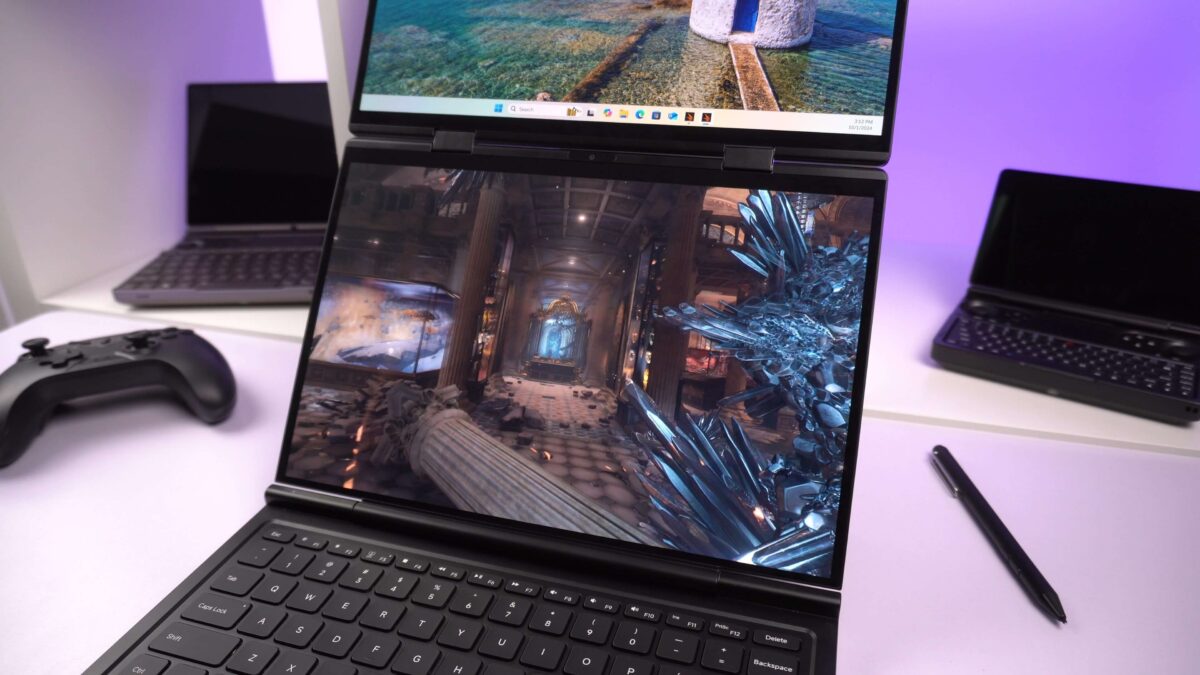
PCMark
- Score: 7,788, a 10% improvement over the GPD WIN MAX 2 2024 model..
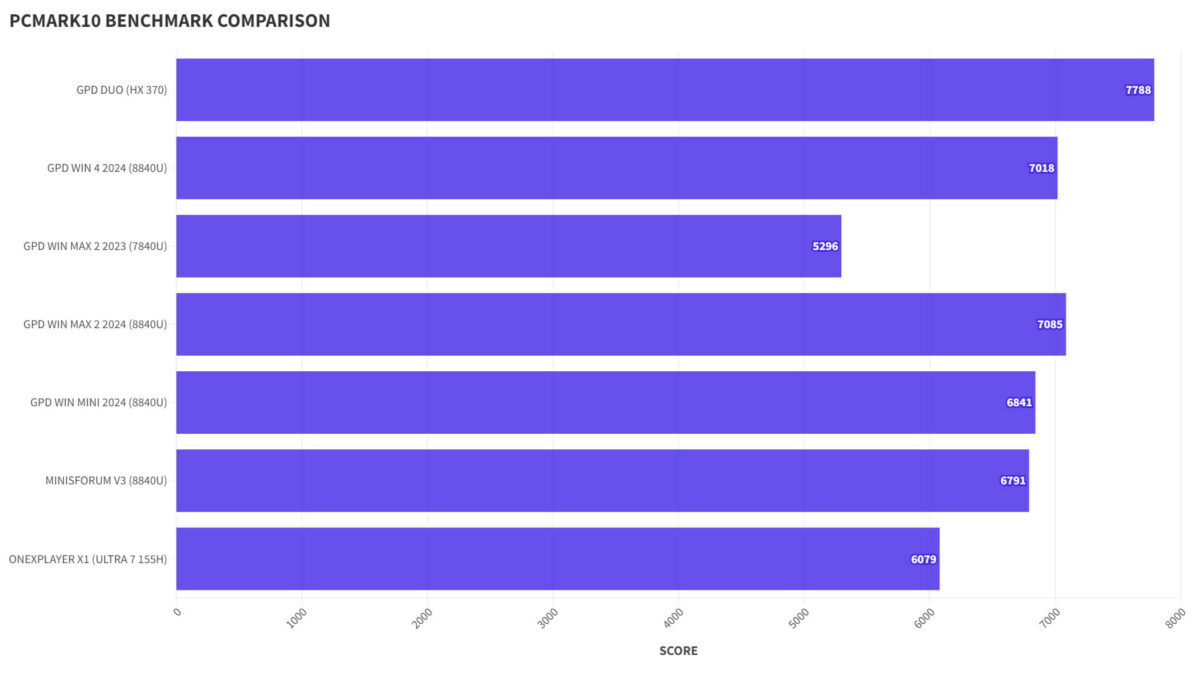
Geekbench 6
- Single-core: 5,852
- Multi-core: 14,107
- This represents a 133% and 24% improvement, respectively, over previous best scores.
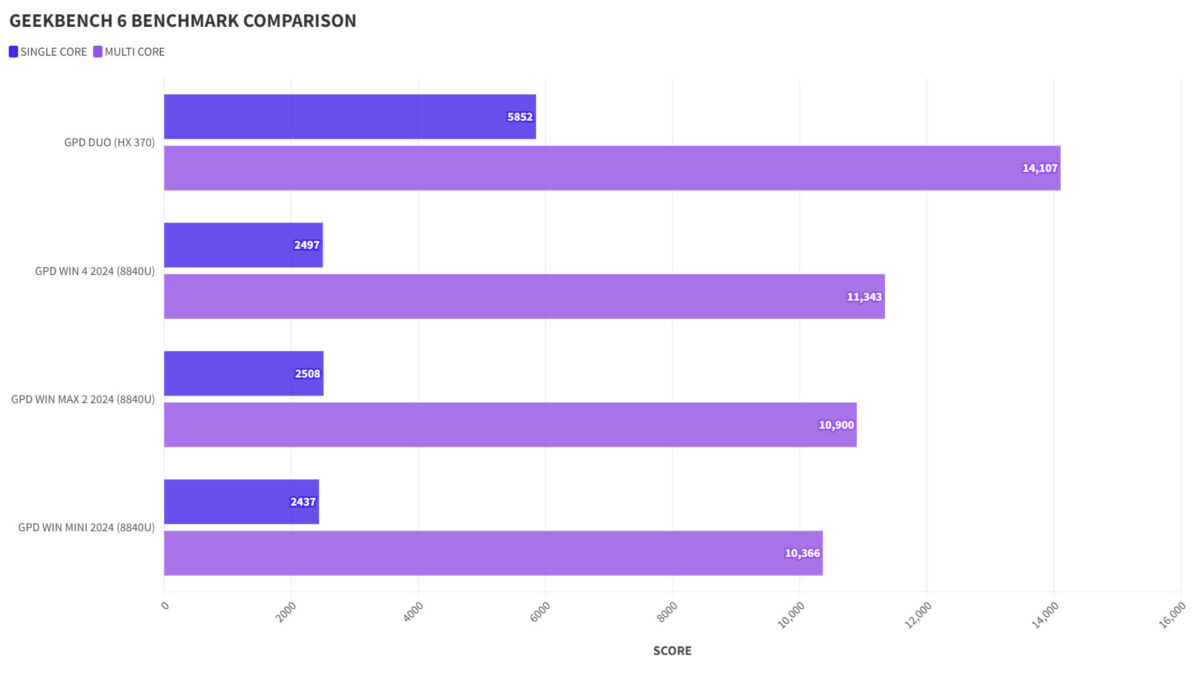
Cinebench R23
- Modest improvements in single-core performance and a 47% increase in multi-core performance over the GPD WIN 4.
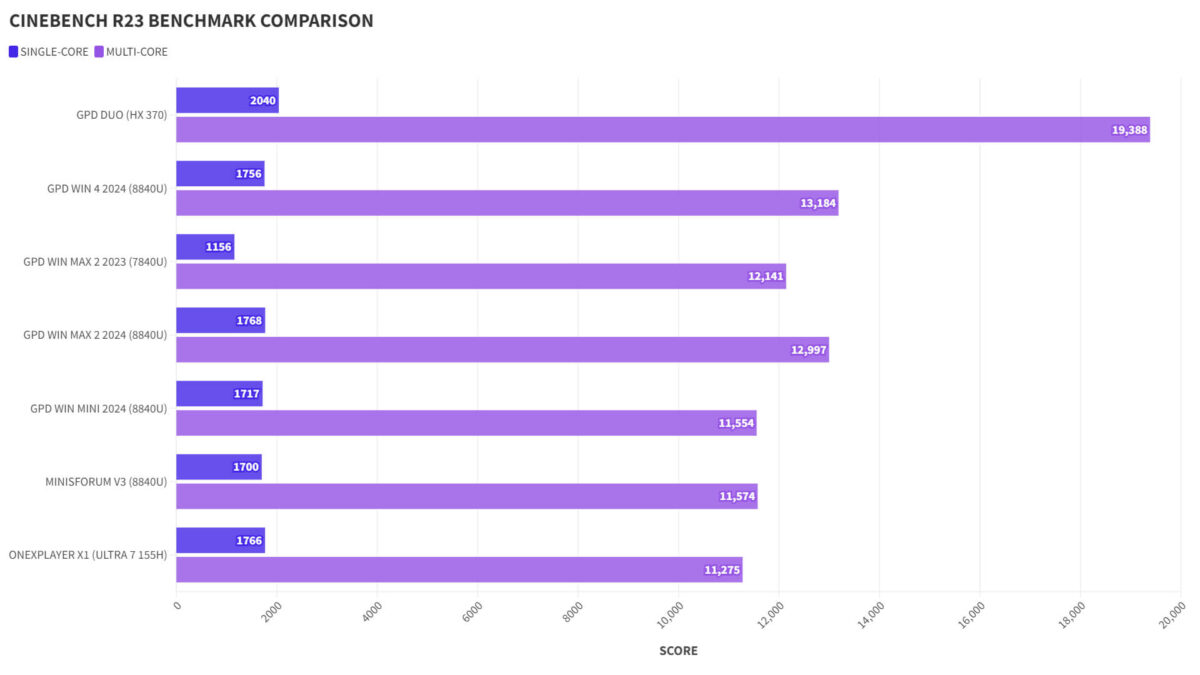
3DMARK
- Notable gains across the board compared to the AMD Ryzen 7 8840U and Intel Ultra 7 models.

Gaming Benchmarks
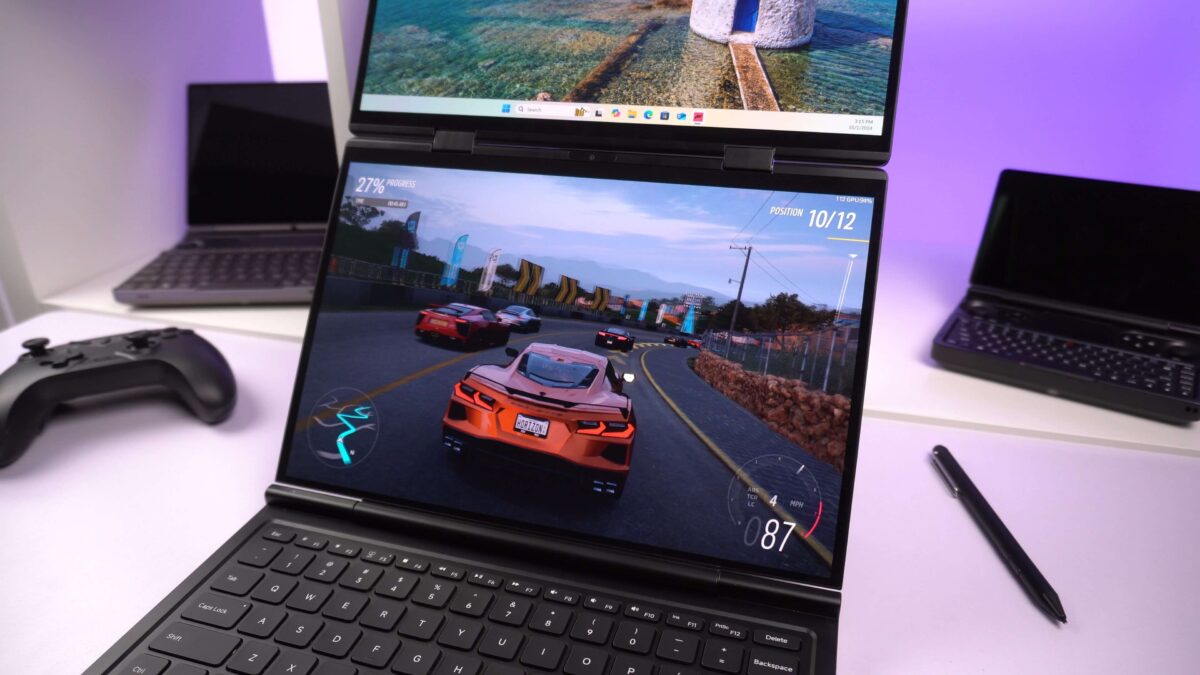
For gaming, we’ll provide a more detailed analysis, including tests with the GPD G1 eGPU in the second part of this GPD Duo review. But here are a few highlights:
Forza Horizon 5
- 720P: 151 FPS
- 1080P: 118 FPS
This marks an 11% to 20% improvement over the WIN 4 2024.

Call of Duty: Modern Warfare 3
- 720P: 135 FPS
- 1080P: 83 FPS
This represents a 21% to 31% increase in performance compared to the WIN 4.
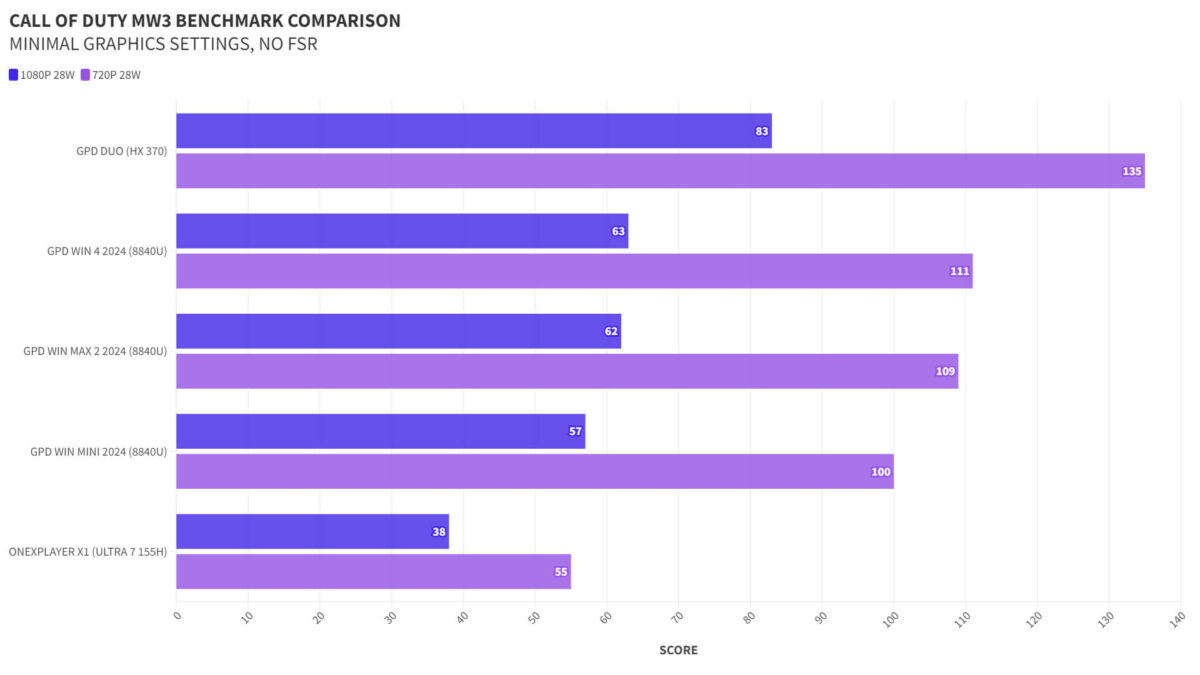
Final Thoughts
We will sum up our GPD Duo review with our thoughts. After spending several days with the GPD Duo laptop with two screens, I’m quite impressed. While it took some time to adjust to the vertical dual-screen orientation, it quickly became second nature as I used the device for work, gaming, and general tasks. Despite a few minor issues, like the loose screen in certain modes, which GPD plans to fix, the Duo performs exceptionally well for day-to-day tasks and gaming.
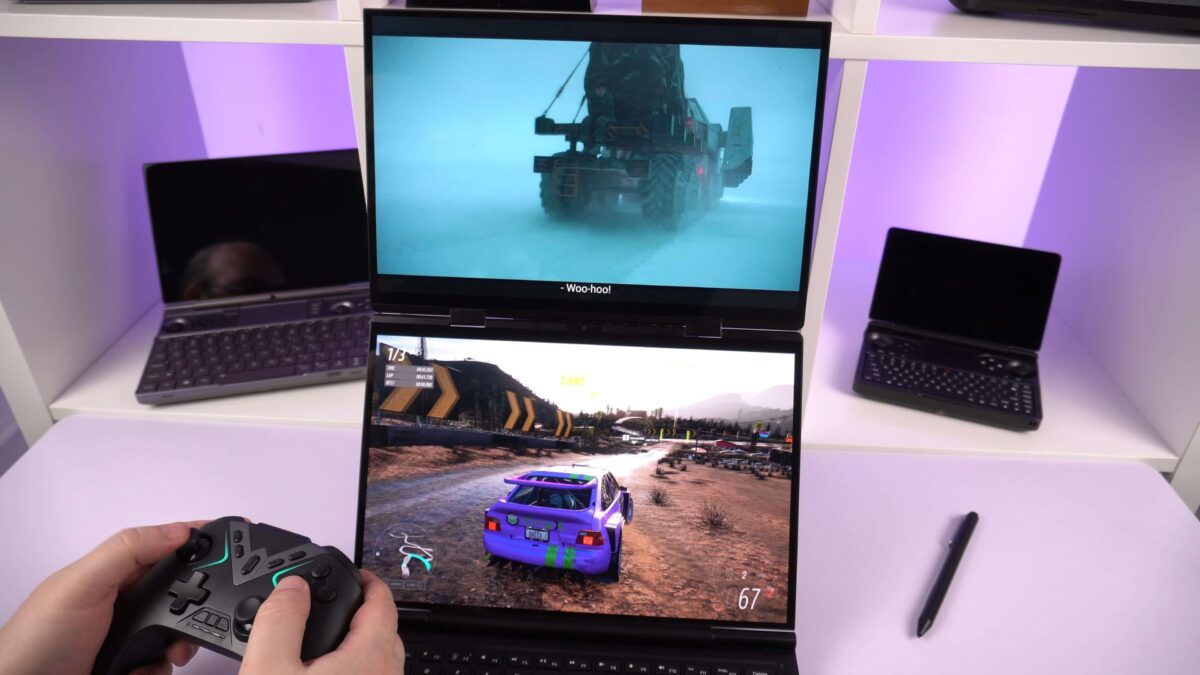
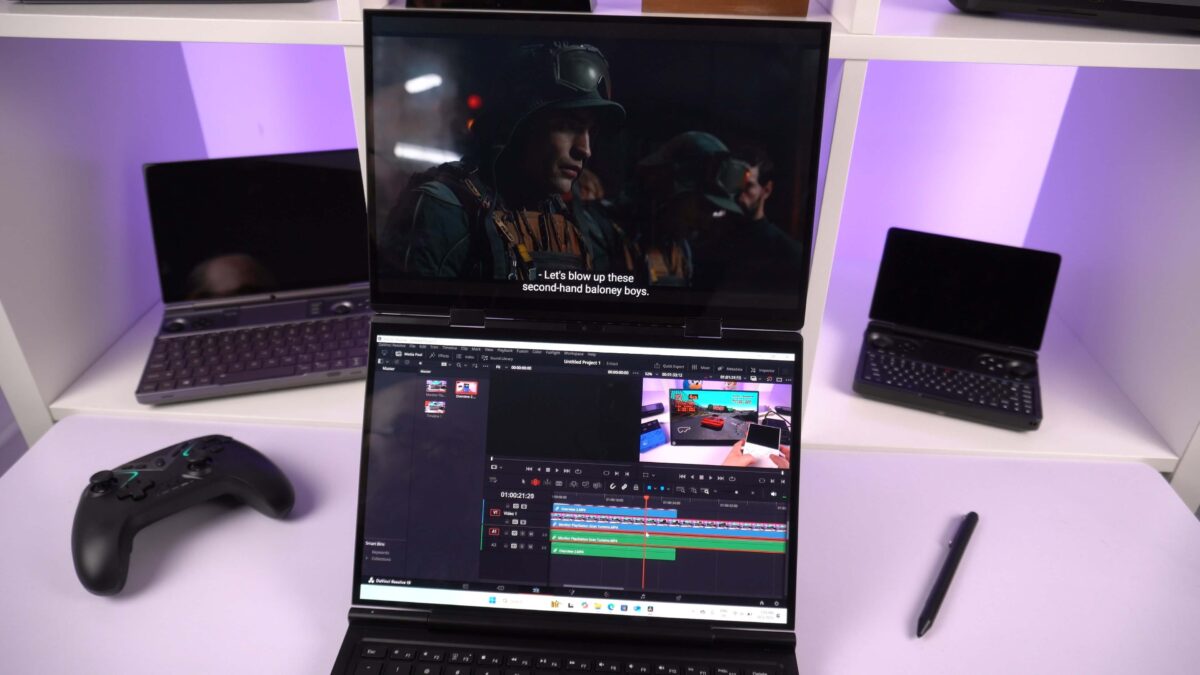
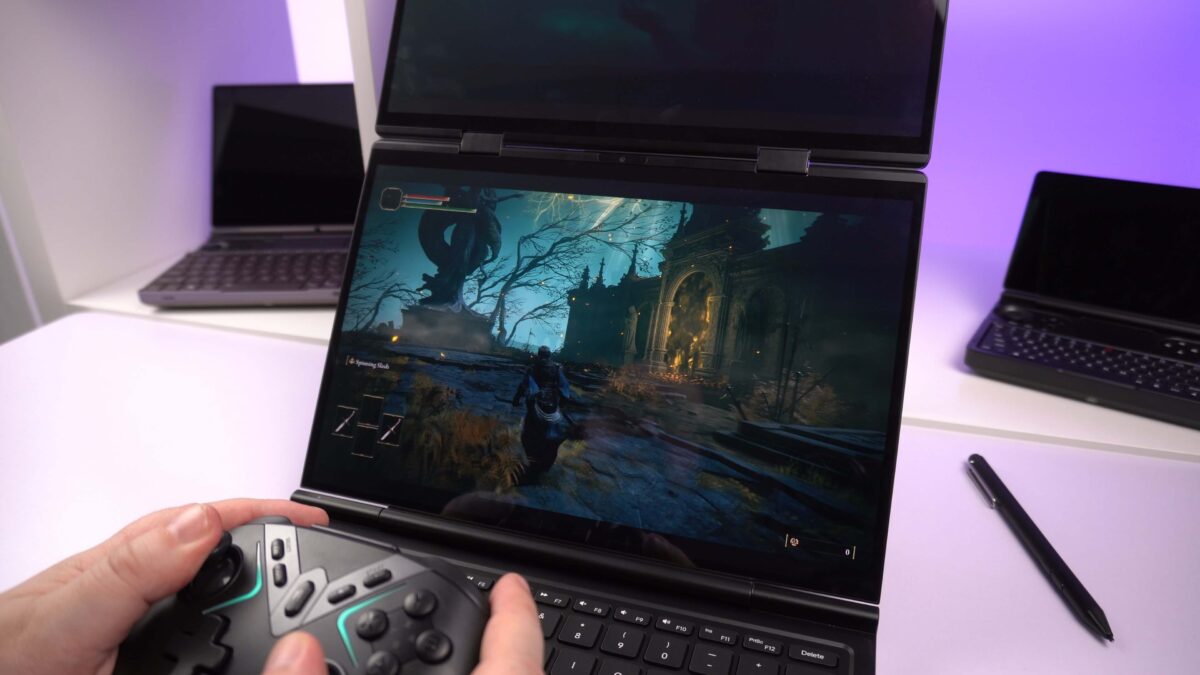
The only downside I encountered was the weight. At over 2kg, it’s heavier than other portable options, and when paired with the GPD G1, carrying it around can be cumbersome. However, if you’re looking for a versatile, dual-screen laptop with solid performance, the GPD Duo is definitely worth considering.
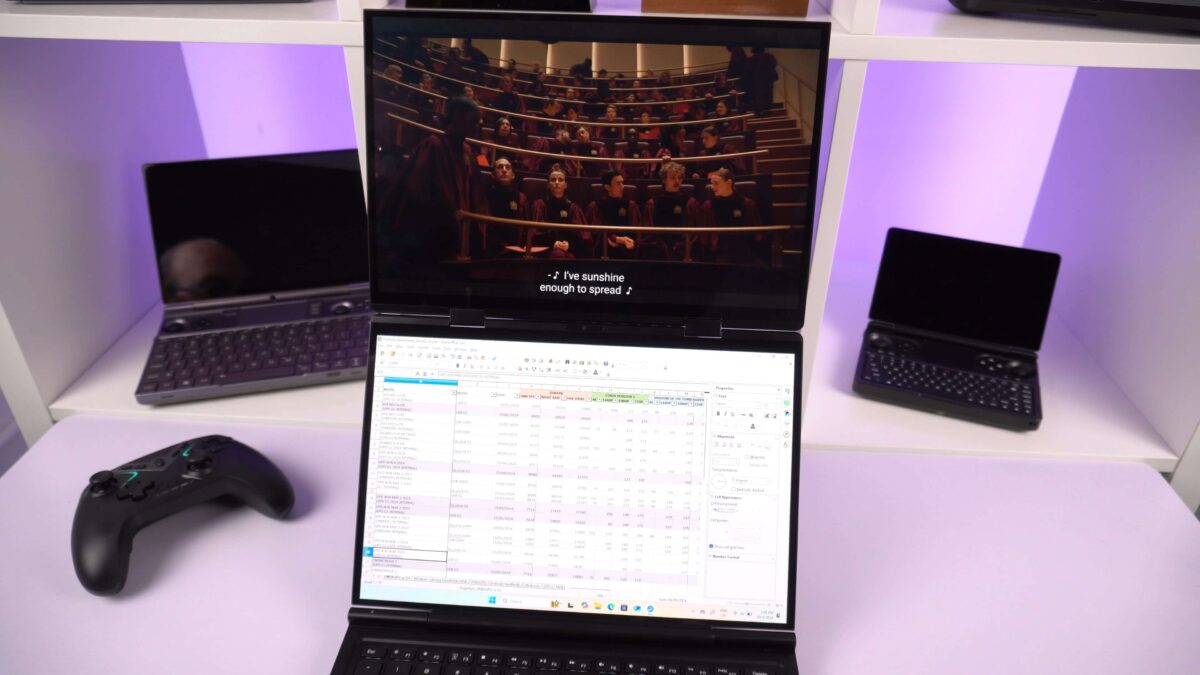
Our next part of the GPD Duo review coming soon will cover the gaming side of the GPD Duo with gaming benchmarks at different TDP and resolutions as well as tests with the GPD G1 eGPU docking station via OCuLink.
We hope you have found our GPD Duo review useful. If you have any questions about the GPD Duo do check out our FAQ here to see if we have already covered it. You can also ask any questions in the comments below and we will be happy to answer them.
GPD DUO Mini Laptop
- 13.3″ Dual Screen AMOLED Display, support active capacitive stylus
- AMD Ryzen™ AI 9 HX 370 / Ryzen™ 7 8840U
- AMD Radeon 890M / 780M /12 CUs 2900 / 2700 Mhz
- Up to 64GB LPDDR5X @ 7500 MT/s
- Up to 8TB (4TB+4TB) High-Speed PCI-E 4.0 NVMe SSD 2280

